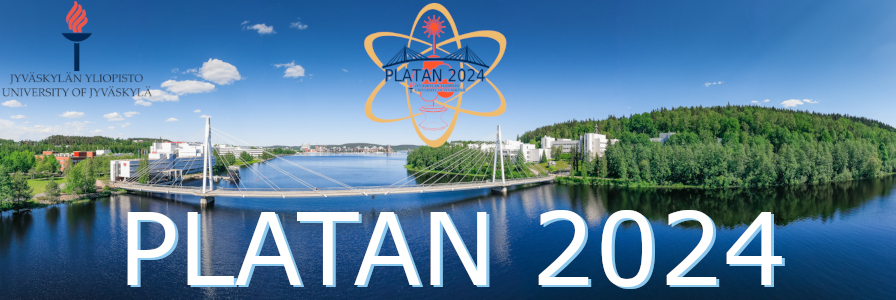Description
Investigating the neutron-deficient isotopes of palladium (Pd, Z=46), positioned close to the doubly magic nucleus $^{100}$Sn (N=Z=50), provides valuable information on the neutron-proton interaction, residual forces and serves as a crucial benchmark for nuclear models [1].
Laser spectroscopy is a powerful tool for studying ground and isomeric state properties in nuclei, such as mean-square charge radii and nuclear moments in a model-independent way. $^{98}$Pd represents the most neutron-deficient isotope within the palladium isotopic chain examined thus far through collinear laser spectroscopy [2].
The hot-cavity catcher proves to be more efficient in reaching the lighter and more exotic isotopes than $^{98}$Pd. Using a similar technique, promising results have been achieved in the optical measurements of neutron-deficient Ag isotopes crossing the N=50 magic number [3]. An upgraded design of hot cavity catcher was tested recently. A primary beam of $^{107}$Ag$^{20+}$ from the K130 cyclotron was implanted into a graphite catcher. Following the implantation atoms diffuse out and effuse into the glassy carbon transfer tube where the atoms are resonantly ionised using a three-step excitation scheme. The ions are then accelerated to 30 keV and mass separated using a dipole magnet. The ion extraction time was measured for different temperatures of the cavity and the mean value was determined to be around 25 ms. An overall efficiency of around 10% was observed.
Similar efficiency can be expected for Pd isotopes with the current hot-cavity and extraction parameters. This could make the feasibility of studying Pd isotopes using in-source laser spectroscopy technique
all the way to $^{92}$Pd (N=Z).
References:
1. Gorska, M. et al. in Journal of Physics: Conference Series 2453 (2023), 012027.
2. Geldhof, S. et al. Physical Review Letters 128, 152501 (2022).
3. Reponen, M. et al. Nature Communications 12, 4596 (2021).

